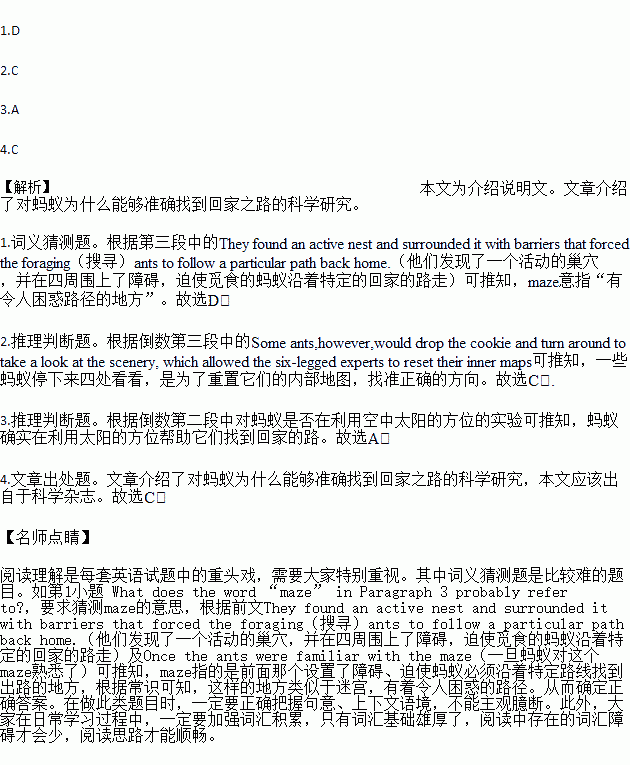题目内容
Next time you need directions,maybe you can ask an ant.These little creatures are masters of navigation(导航)that some can find their way home whether they're walking forward or backward,according to a study in Current Biology.
Ants often travel long to bring back the food to their nests.But how do they know where they’re going?
Researchers went to Spain to mess with some desert ants.They found an active nest and surrounded it with barriers that forced the foraging(搜寻)ants to follow a particular path back home.Once the ants were familiar with the maze,the researchers would take them up,hand them pieces of a cookie and then put them back in a different location,one that required taking a 90 degree turn to get to the nest.
The research found that the ants carrying a small,easy-to-carry piece would run forward with confidence and were able to head on home.Some ants,however,would drop the cookie and turn around to take a look at the scenery, which allowed the six-legged experts to reset their inner maps,catch their cookies and head in the right direction.
These ants seem to use sky clues,like the position of the sun,to keep them on track.When the researchers used a mirror to make it look like the sun on the other side of the sky,the cornered ants would turn tail for the opposite direction.
So ants integrate(整合)a lot of information to successfully bring home the food.
1.What does the word “maze” in Paragraph 3 probably refer to?
A. A nest that active ants live in.
B. An experiment that is done in the desert.
C. A method that helps to locate food.
D. A place that consists of confusing paths.
2.Why did some ants stop to look at the scenery?
A. To get over the man-made barriers.
B. To enjoy the scenery along the route.
C. To ensure they're in the right direction.
D. To check directions with their maps.
3.According to the passage,what probably helps the ants find their way home?
A. The position of the sun. B. One particular path.
C. A 90 degree turn. D. Pieces of a cookie.
4.Where does this passage probably come from?
A. An adventure novel. B. A geography textbook.
C. A science magazine. D. A tourist brochure.

